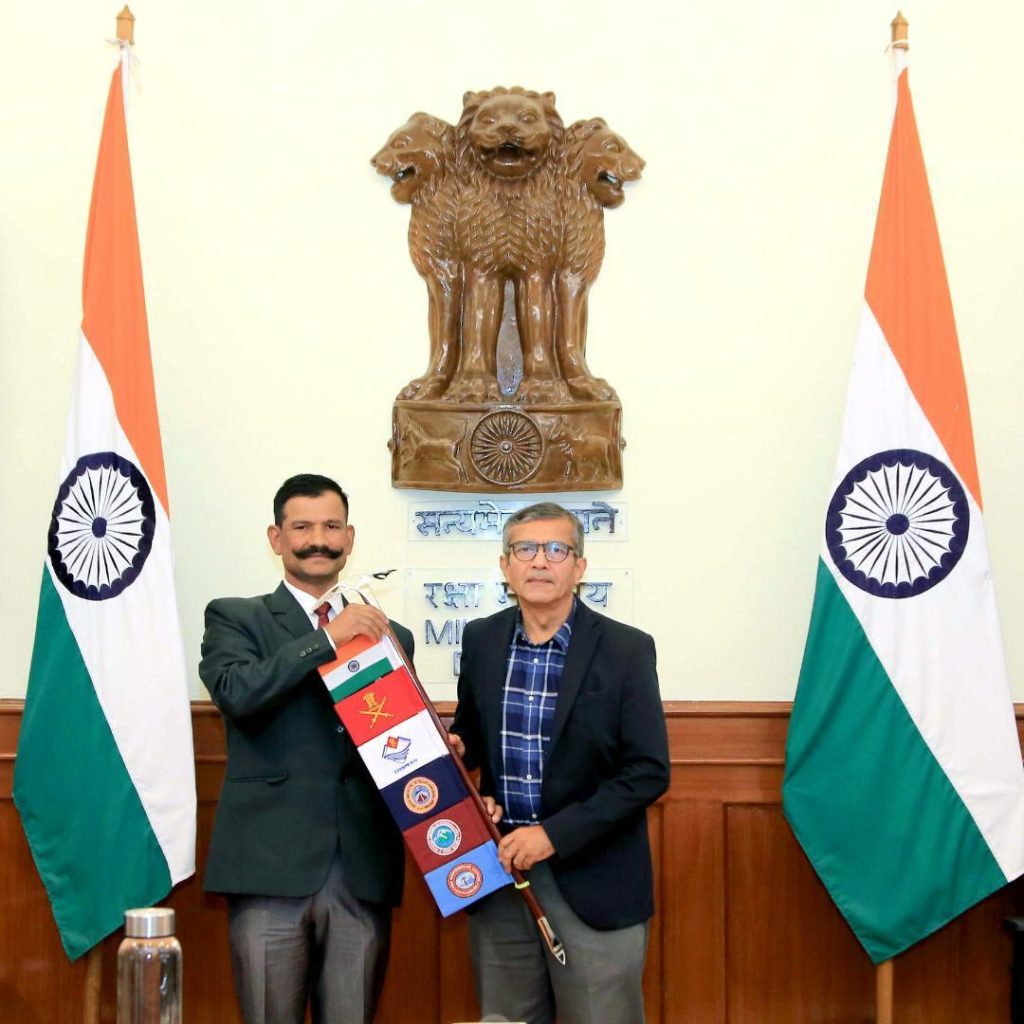
India Flags-in Mount Everest & Kilimanjaro Expeditions: A Triumph of Mountaineering Excellence
On July 17, 2025, Defence Secretary Rajesh Kumar Singh flagged in mountaineering expeditions to Mount Everest and Kilimanjaro, marking a significant milestone in India’s mountaineering history. The Everest mission was a special celebration of the 60th anniversary of the Nehru Institute of Mountaineering, while the Kilimanjaro team featured a remarkable Divyangjan climber, Uday Kumar. This remarkable achievement showcased India’s mountaineering excellence and adventure leadership across land, sea, and air.
The Everest Expedition: A Tribute to Nehru Institute of Mountaineering’s Legacy
The Mount Everest expedition was a momentous occasion for the Nehru Institute of Mountaineering, which has been instrumental in nurturing India’s mountaineering talent for six decades. Established in 1965, the institute has produced some of the country’s most accomplished mountaineers, including several who have climbed the world’s highest peaks. The 60th-anniversary expedition to Mount Everest was a testament to the institute’s commitment to promoting mountaineering in India and fostering a sense of adventure among young Indians.
The Kilimanjaro Expedition: A Journey of Inspiration and Perseverance
The Kilimanjaro expedition, on the other hand, was a remarkable achievement in its own right. Featuring Uday Kumar, a Divyangjan climber, the team’s success was a shining example of what can be achieved through determination and hard work. Uday Kumar, who was born with a physical disability, had always been fascinated by mountaineering and had spent years training to climb the highest peak in Africa. His inclusion in the Kilimanjaro expedition was a testament to India’s commitment to promoting inclusivity and diversity in adventure sports.
The expeditions were a significant achievement for India’s mountaineering community, showcasing the country’s mountaineering excellence and adventure leadership across land, sea, and air. The success of the expeditions was a result of rigorous training, meticulous planning, and a strong team spirit. The climbers had to overcome numerous challenges, including treacherous terrain, extreme weather conditions, and physical exhaustion. However, their determination and perseverance paid off, as they successfully reached the summit of Mount Everest and Kilimanjaro.
A Symbol of India’s Mountaineering Aspirations
The flag-in ceremonies at Mount Everest and Kilimanjaro were a symbol of India’s mountaineering aspirations and its commitment to promoting adventure sports. The events were attended by Defence Secretary Rajesh Kumar Singh, who flagged in the expeditions, along with other dignitaries and officials. The ceremonies were a celebration of India’s mountaineering achievements and a recognition of the sacrifices and hard work of the climbers.
India’s mountaineering community has made significant strides in recent years, with Indian climbers scaling some of the world’s highest peaks, including Mount Everest, K2, and Annapurna. The success of the Everest and Kilimanjaro expeditions is a testament to the country’s growing reputation as a major player in the world of mountaineering.
Conclusion
The flag-in ceremonies at Mount Everest and Kilimanjaro marked a significant milestone in India’s mountaineering history, showcasing the country’s mountaineering excellence and adventure leadership across land, sea, and air. The expeditions were a celebration of India’s mountaineering achievements and a recognition of the sacrifices and hard work of the climbers. As India continues to push the boundaries of mountaineering, the success of the Everest and Kilimanjaro expeditions will serve as a source of inspiration for generations to come.
News Source:
https://www.refersms.com/mount-everest-kilimanjaro-expeditions/






